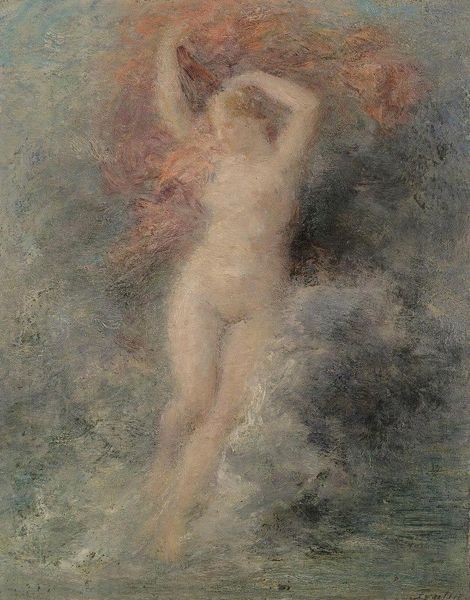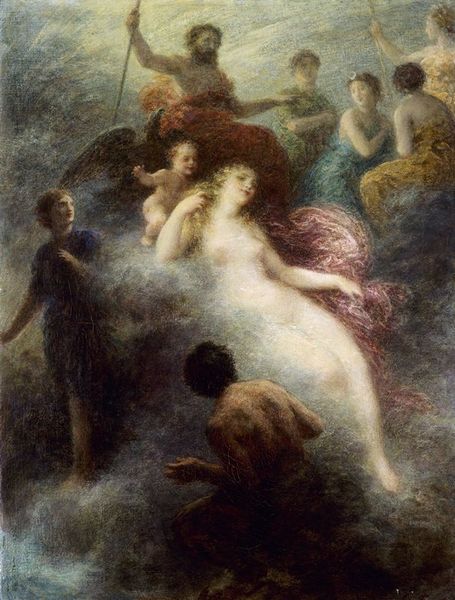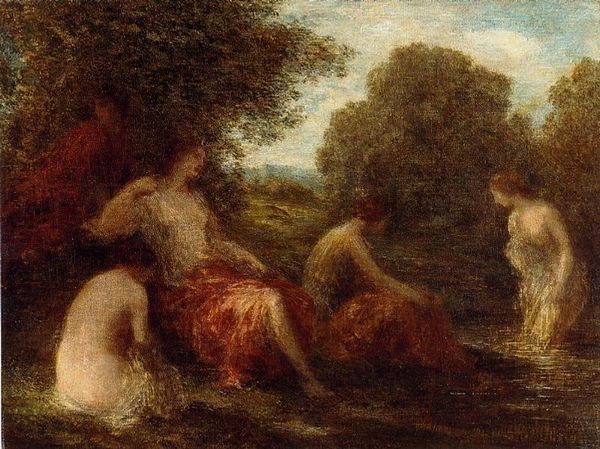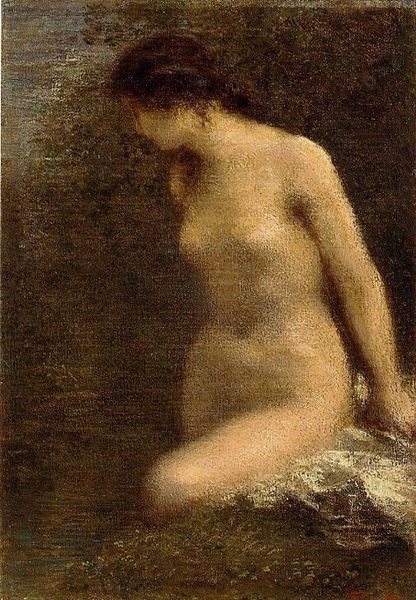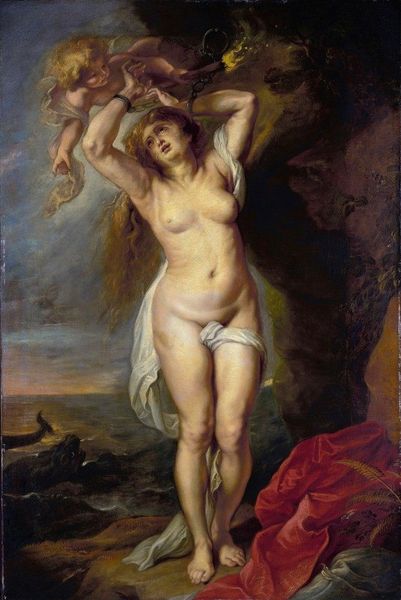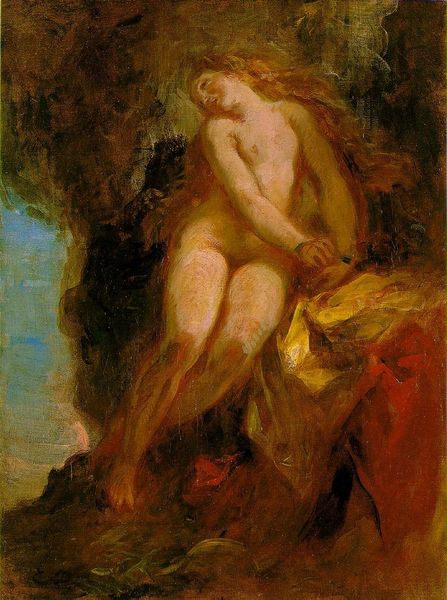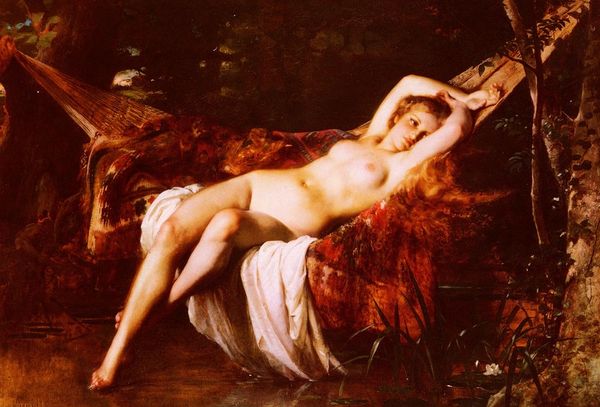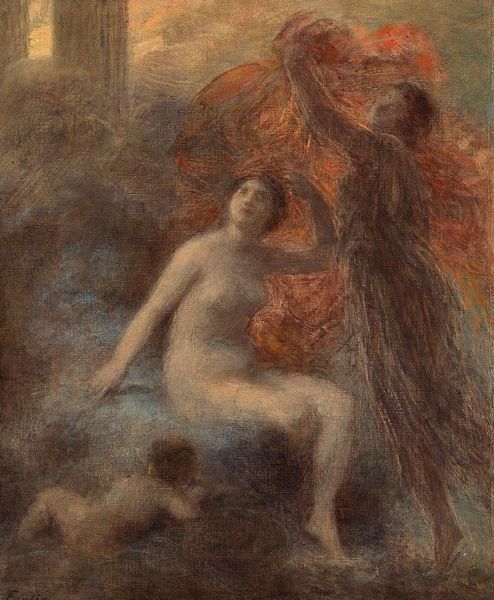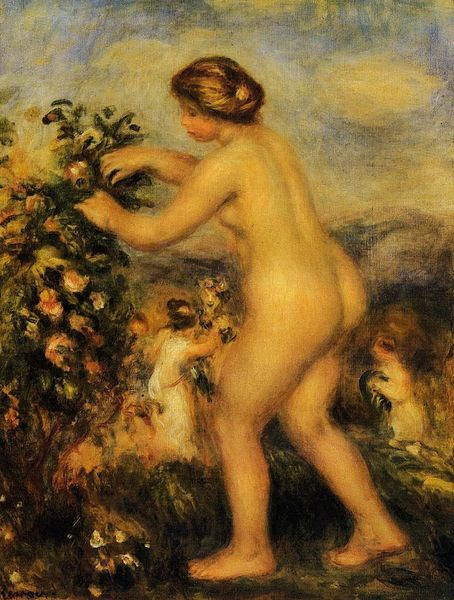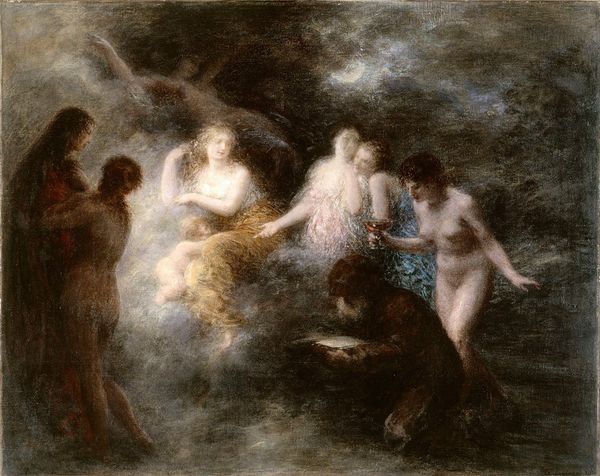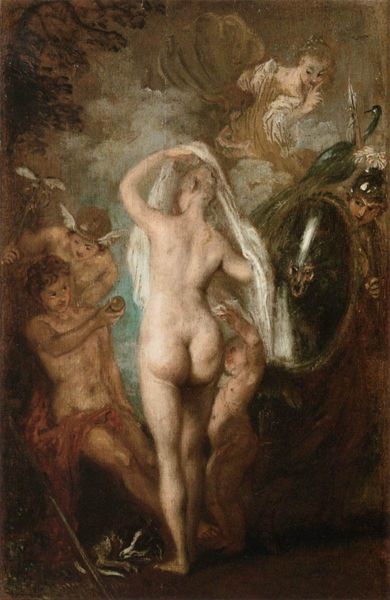
#
impressionistic
#
abstract painting
#
possibly oil pastel
#
oil painting
#
neo expressionist
#
acrylic on canvas
#
underpainting
#
mythology
#
painting painterly
#
animal drawing portrait
#
watercolor
Copyright: Public domain
Curator: This is Henri Fantin-Latour’s “Venus and Cupid,” painted in 1902. Looking at it, what's your initial impression? Editor: There's a real softness to it, almost like a memory. It's muted and ethereal, a little dreamlike. Curator: Fantin-Latour worked during a fascinating time, as shifts in the social functions of art and debates around production shaped the late 19th and early 20th centuries. His style resists easy categorization but there’s something quietly revolutionary here in the making. Editor: It’s difficult to see it that way initially. Considering the classic subject matter of Venus and Cupid, though, what do you make of Fantin-Latour’s choice to represent the figures with such a blurry and ambiguous form, particularly regarding questions of idealized beauty, especially through a gendered lens? Curator: It does blur some of the traditional gender roles assigned to these classical figures through the use of very soft, almost yielding brushstrokes and composition. How does that relate, then, to the emerging role of photography as art? Could he be playing with a new language, reflecting shifts in artistic skill and cultural expectation, especially in a market so caught up in rapid industrial change? The painterly application softens boundaries – just look at the edges. It's neither strictly realist nor academic. Editor: Interesting point. Considering contemporary academic paintings often perpetuated the objectification of the female nude within rigid standards, is Fantin-Latour using the softness, perhaps challenging those power dynamics or offering a gentler representation? He might have blurred boundaries, even questioned art’s role itself within the power of visibility and gender, yes? Curator: Right. Also, thinking of materials—the handling of oil on canvas… notice the layering, that builds toward an effect instead of a polished surface, as you might find at the salon. Editor: Exactly! A definite movement away from precise detail. The overall atmospheric effect definitely emphasizes mood over meticulous representation, almost embracing that incompleteness. A softness for both figures, yes, even as they resist our complete comprehension of their identities and narrative. Curator: Perhaps it makes sense, then, in light of shifting artistic roles as manufacturing moved into factories, that some artists would instead explore feeling over the industrial revolution's mass-produced clarity. Editor: An interesting reframing, looking through that materialist lens! The picture becomes, then, less of a mythical scene and more an artifact, revealing the processes and the historical tensions around artistic identity itself. I see that. Curator: Well, I think the painting has left us both contemplating its own artistic identity and construction today. Editor: Yes. Thank you. It’s provided fresh angles for us to consider our own expectations.
Comments
No comments
Be the first to comment and join the conversation on the ultimate creative platform.
